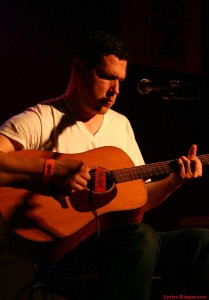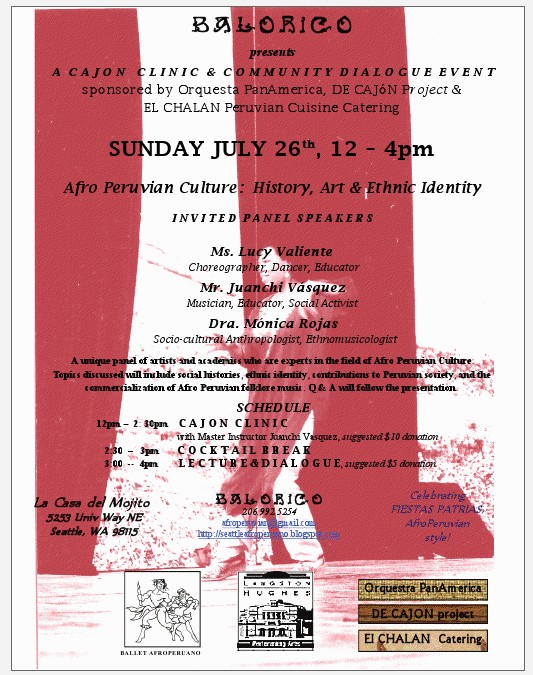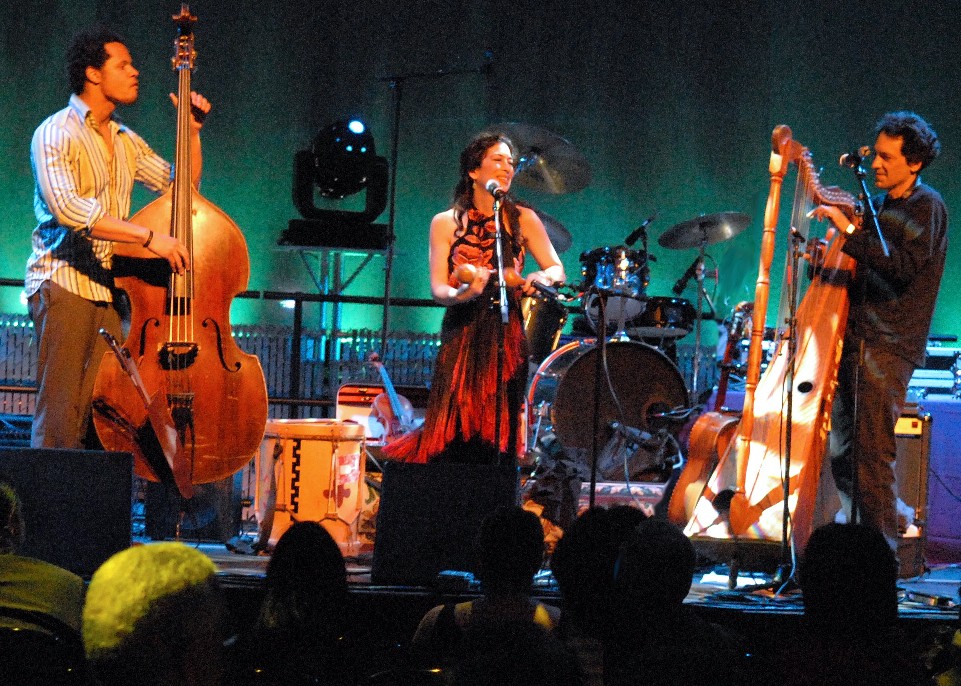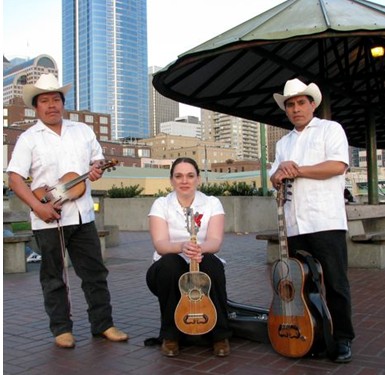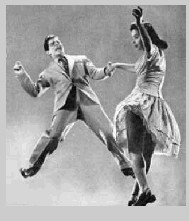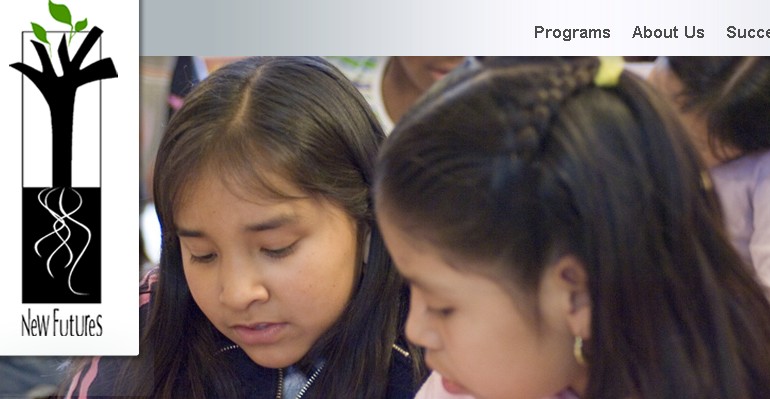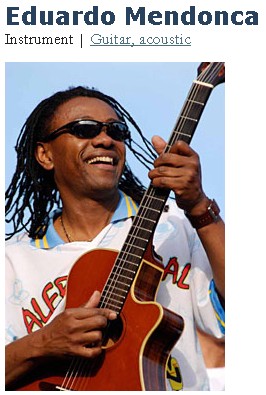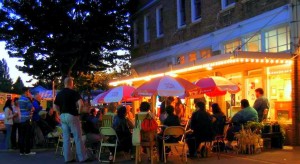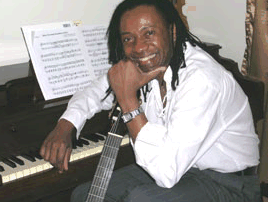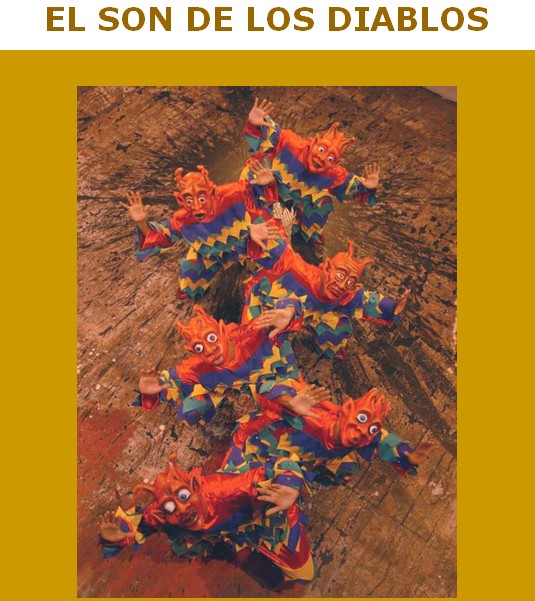Got a note from local writer Brian Barr. He lives in White Center, just two blocks away from the former home of local poet legend Richard Hugo. While there’s the Hugo House in another part of the area, in White Center, Barr was sad to discover, there’s little evidence of his existence. Read what he wrote on his own website, and see if you’d like to join his quest to change that.
Richard Hugo was here – but evidence of that is where?
October 14th, 2009 Tracy Posted in Arts, history, White Center news Comments Off on Richard Hugo was here – but evidence of that is where?
White Center for the Arts announces next Saturday’s lineup
October 11th, 2009 Tracy Posted in Arts, White Center for the Arts, White Center news Comments Off on White Center for the Arts announces next Saturday’s lineup
Just published on White Center for the Arts’ Facebook page – who/what you’ll see during next Saturday’s Art Walk, 5-9 pm October 17th: At Salvadorean Bakery, photography by Raina Anderson; at Cafe Rozella, paintings by Robert Houk, Jr.; at Proletariat Pizza, mixed media by Amanda Helmick; at D’Zul, tattoo and airbrush urban art; at Full Tilt Ice Cream, Onion Carillo and Jodi Luna Robinson; at Big Al Brewing all month, photography by Julio Castro.
Date set for White Center for the Arts’ next event
October 8th, 2009 Tracy Posted in Arts, White Center for the Arts, White Center news 1 Comment »
![]() White Center for the Arts has announced it’s set the date for its next Third Saturday Art Walk – October 17, 5-9 pm, more details to come. WCFTA is on Twitter, too – @WCFTA.
White Center for the Arts has announced it’s set the date for its next Third Saturday Art Walk – October 17, 5-9 pm, more details to come. WCFTA is on Twitter, too – @WCFTA.
Blues Night at Cafe Rozella as Chris Stevens and the Surf Monkeys Rock on Saturday at 7 p.m.
October 7th, 2009 Ricardo Posted in Arts, cafe rozella, Fun, Music, White Center Comments Off on Blues Night at Cafe Rozella as Chris Stevens and the Surf Monkeys Rock on Saturday at 7 p.m.
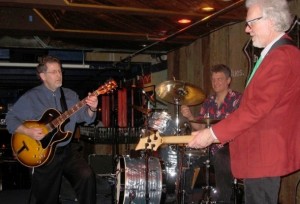
Chris Stevens Surf Monkeys
Rock Cafe Rozella
Saturday October 10th
7pm-10pm
Admission is FREE
Looking for fun? Burien Little Theatre extends an invitation
October 3rd, 2009 Tracy Posted in Arts, Burien, Fun Comments Off on Looking for fun? Burien Little Theatre extends an invitation
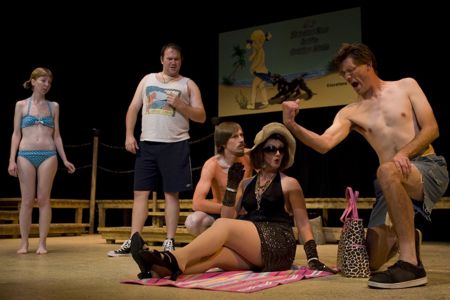
That’s a photo from “Psycho Beach Party,” in its first weekend at Burien Little Theatre. The folks at BLT e-mailed WCN to say that since part of North Highline is becoming part of Burien, they thought it a good idea to start expanding their horizons. So here’s their invitation to you to come see what their website calls “‘Gidget’ meets ‘The Three Faces of Eve’ …” Find out more here; there are shows tonight and tomorrow afternoon ($7 matinee!), and the run continues weekends through November 1st.
Happening Tonight: Correo Aereo Plays Cafe Rozella
September 19th, 2009 Ricardo Posted in Arts, cafe rozella, Fun, Music, White Center Comments Off on Happening Tonight: Correo Aereo Plays Cafe Rozella
Head on over to Cafe Rozella for some beautiful music. Correo Aereo rarely plays and this is an opportunity to hear some excellent Latin American music. 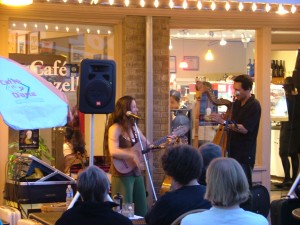
Get artsy in downtown White Center this Saturday
August 12th, 2009 Tracy Posted in Arts, Fun, White Center news Comments Off on Get artsy in downtown White Center this Saturday
From White Center for the Arts:
Join us for our August Third Saturday Art Event!!!
Prepare to be surprised and amazed at the wealth of art to be had in White Center.We will host music, sculpture, drawing, painting, film, and an interesting installation.
Saturday, August 15, 2009
5:00 PM until 10:00 PM
9639 16th Ave SW.
(Don’t try the 17th St. entrance. It will be locked.)Support your local artists, and the community of White Center!
Sin Fronteras to Play Cafe Rozella Friday (Aug. 7th) at 7 p.m. FREE
August 4th, 2009 Ricardo Posted in Arts, cafe rozella, Music, White Center Comments Off on Sin Fronteras to Play Cafe Rozella Friday (Aug. 7th) at 7 p.m. FREE
SIN FRONTERAS
“Without Borders“,
Playing at Café Rozella
August 7, 2009
7PM-9:30
is a 4 member, Seattle based ensemble that interprets songs from across Central & South America and the Caribbean. Founded in 2002, the group draws heavily from the Nueva Cancion song movement, with an emphasis on Andean instrumentation, three-part vocal harmony, Chilean and Argentinean composers. Sin Fronteras is committed to unity among all peoples of the Americas and beyond.
> Sin Fronteras has performed at Seattle Center Festal Festivals (Fiestas Patrias), Dia de Muertos festivals, the Fremont Summer Solstice Festival and the the NW Folklife Festival. They have perfomed in collaboration with the The Seattle Peace Chorus, Correo Aereo and many other local music ensembles; in support of Casa Latina, Jobs With Justice, CISPES, Centro Cultural Chileno and other local non-profit organizations; at The Northwest School, The Little School, at the Seattle Folklore Society’s spring concert series, and at Town Hall Seattle with the Persian ensemble Kamand, in celebration of the Iranian New Year festival of Norooz; at Cafe Traditions in Olympia and at the spanish-indigenous play “Arauco” at Seattle Central Community College, at Haller Lake Community Center and local poets from Chile and the US.
> Their members hail from the U.S., Colombia, Mexico and Chile.
Damien Jurado at Full Tilt this Sunday
July 24th, 2009 FullTilt Posted in Arts, Full Tilt Ice Cream Comments Off on Damien Jurado at Full Tilt this Sunday
Reminder: Bring a Donation for White Center Food Bank for Correo Aereo Plays Cafe Rozella Friday, July 24th at 7 p.m.
July 23rd, 2009 Ricardo Posted in Arts, cafe rozella, Families, Fun, Music, West Seattle, White Center Comments Off on Reminder: Bring a Donation for White Center Food Bank for Correo Aereo Plays Cafe Rozella Friday, July 24th at 7 p.m.
Correo Aereo, (Air Mail), are Austin Music Award winners now based in the NW. The Latin American/World music trio performs traditional and original music from Venezuela, Argentina, Mexico and beyond, combining a stunning array of string and percussive instruments with silken vocal harmonies described as “…locked in carnal embrace.” by the Austin Chronicle. Hailed for exciting musical virtuosity and profoundly moving performances through unknown landscapes of Latin America, their music is both viscerally ancient and vibrantly contemporary. Abel Rocha plays Venezuelan and Mexican harp, guitar, cuatro, quinta huapanguera and vocals. Madeleine Sosin offers violins, maracas, bombo, jarana, quijada and vocals. They are joined by ‘young lion’ Evan Flory Barnes, on hot stand-up bass.
Their music is richly polyrhythmic and soulfully melodic – soaring, fiery, haunting and joyful…this is the universal language; world music at it’s finest. Perfect for all audiences and ages!
———–
A Cajon Clinic & Community Dialogue Event
July 22nd, 2009 Ricardo Posted in Arts, Music, Not White Center but we're mentioning it anyway Comments Off on A Cajon Clinic & Community Dialogue Event
Correo Aereo to Perform at Cafe Rozella Friday, July 24th at 7 p.m.
July 20th, 2009 Ricardo Posted in Arts, cafe rozella, Fun, Music, West Seattle, White Center Comments Off on Correo Aereo to Perform at Cafe Rozella Friday, July 24th at 7 p.m.
At Cafe Rozella we have the opportunity to book some great acts. Correo Aereo is, without hesitation, one of our favorite musical groups. They will be peforming at Cafe Rozella this Friday, July 24th at 7 p.m. Admission is always free but we encourage you to bring a donation for the White Center Food Bank.
Correo Aereo, (Air Mail), are Austin Music Award winners now based in the NW. The Latin American/World music trio performs traditional and original music from Venezuela, Argentina, Mexico and beyond, combining a stunning array of string and percussive instruments with silken vocal harmonies described as “…locked in carnal embrace.” by the Austin Chronicle. Hailed for exciting musical virtuosity and profoundly moving performances through unknown landscapes of Latin America, their music is both viscerally ancient and vibrantly contemporary. Abel Rocha plays Venezuelan and Mexican harp, guitar, cuatro, quinta huapanguera and vocals. Madeleine Sosin offers violins, maracas, bombo, jarana, quijada and vocals. They are joined by ‘young lion’ Evan Flory Barnes, on hot stand-up bass.
Their music is richly polyrhythmic and soulfully melodic – soaring, fiery, haunting and joyful…this is the universal language; world music at it’s finest. Perfect for all audiences and ages!
For those who want to learn more about the band: http://www.correoaereo.com/lofi/reviews.html
White Center for the Arts’ big-time Jubilee Days plans
July 13th, 2009 Tracy Posted in Arts, White Center Jubilee Days, White Center news Comments Off on White Center for the Arts’ big-time Jubilee Days plans
You won’t be able to miss White Center for the Arts during White Center Jubilee Days this weekend – they’re planning to be everywhere, according to this update from Shelli:
White Center for the Arts (www.whitecenterforthearts.org) will be heavily represented at Jubilee Days (www.jubileedays.org) this year. For both days of the event, July 18th and 19th, White Center for the Arts will have a booth in the community area where everyone can participate in a future public art project. This will be the first of many community art projects that we will host. It will be a clay mosaic. Do what you want with your piece of clay, sign your name or initials, and we will make sure that your piece is placed in the finished mosaic. Fun for one and all. And you’ll be a famous artist!
White Center for the Arts will also have a float in the parade, which starts at the McDonalds on 16th Ave SW near 114th. The float starts at 1:00 PM. We will be handing out candy and flyers. We will float towards downtown White Center on 16th Ave SW with the rest of the crew. You’ve got to see what we are making this time!
White Center for the Arts is hosting another Art Event this coming weekend in conjunction with Jubilee Days. We will be in the parking lot of the Skate Building on 17th Ave SW. We will be active for our regular hours of 5 PM to 10 PM. Enjoy the nearby Beer Gardens, and the music flowing from the stage while you watch art in action!
Children of the Revolution Trio Perform Cafe Rozella – Friday (June 26th) at 7 p.m.
June 23rd, 2009 Ricardo Posted in Arts, cafe rozella, Fun, Music, White Center Comments Off on Children of the Revolution Trio Perform Cafe Rozella – Friday (June 26th) at 7 p.m.
Expect a full house and lots of energy when the group Children of the Revolution perform at Cafe Rozella.
Performance starts at 7 p.m., Friday June 26th at Cafe Rozella
“When you go to a Children of the Revolution show, you might as well leave your preconceptions about world music at the door” wrote Tina Potterf of the Seattle Times. Fans will usually say something like, “That was the best live show Ive ever been to; I don’t quite know how to describe it.” From Bozeman Montana to the caves of Granada, Spain, from Istanbul to Taiwan, COTR make life-long fans wherever they go.
They can loosely be compared to such breakaway and high-energy world music artists such as Ozomatli, Gipsy Kings, Santana, Manu Chau and the Afro Celt Sound System, but all similarities stop there. Made up of virtuoso musicians, singers and dancers from around the world, COTR blend their Flamenco, Greek, and Rock roots creating, a lush and melodic sound driven by infectious Latin and Middle-Eastern grooves.
The group is fronted by lead singer Vassili, who grew up on the Greek Islands, and former metal head turned flamenco guitarist Eric Jaeger. Sharing the spotlight is Barcelona-born flamenco dancer Encarnación. Their electrifying and sexy concerts showcase outstanding musicianship and songwriting with world-class dance performances. Both world music aficionados and those new to the genre agree – COTR puts on one of the most unifying and entertaining shows in the world.
Cafe Rozella
9434 Delridge Way SW
Seattle, WA 98106
(206) 763-5805
guarnero@caferozella.com
Today and tonight: Full Tilt birthday, White Center for the Arts event
June 20th, 2009 Tracy Posted in Arts, Full Tilt Ice Cream, Fun, White Center news 1 Comment »
 As of noon, Full Tilt Ice Cream is open for the day and into the night, since there are two bands tonight (starting at 9). This is the day FT is celebrating its first birthday, so if you buy a cone/pint, the equivalent will be donated to the White Center Food Bank. And tonight’s a great night to be on 16th SW, as White Center for the Arts has its monthly event, 5-10 pm in the old skating rink. The group had been trying to buy the building — Justin at Full Tilt tells us a deal couldn’t be worked out by the time the building was scheduled to be auctioned, so the auction went forward last week, but, he says, nobody bid, so that may keep the door open for a nonprofit purchase – at a better price than what was being offered. We’ll keep following the story.
As of noon, Full Tilt Ice Cream is open for the day and into the night, since there are two bands tonight (starting at 9). This is the day FT is celebrating its first birthday, so if you buy a cone/pint, the equivalent will be donated to the White Center Food Bank. And tonight’s a great night to be on 16th SW, as White Center for the Arts has its monthly event, 5-10 pm in the old skating rink. The group had been trying to buy the building — Justin at Full Tilt tells us a deal couldn’t be worked out by the time the building was scheduled to be auctioned, so the auction went forward last week, but, he says, nobody bid, so that may keep the door open for a nonprofit purchase – at a better price than what was being offered. We’ll keep following the story.
White Center for the Arts reveals location for next “art event”
June 18th, 2009 Tracy Posted in Arts, Fun, White Center news 3 Comments »
They announced the event before the location … but tonight, the latter was revealed – this is Saturday night, by the way:
Location Revealed!!!
This month’s Art EVENT,
brought to you byWhite Center for the Arts,
Will be at 9639 16th Ave SW.
Yes, once again, and for the last time,
The Ole Skate Rink
White Center, WAFrom 5:00 PM until 10:00 PM
For questions and information, please call
206-306-6230
Music at Cafe Rozella – Friday, June 19th at 7 p.m.
June 17th, 2009 Ricardo Posted in Arts, cafe rozella, White Center Comments Off on Music at Cafe Rozella – Friday, June 19th at 7 p.m.
Trio Lucero And Special Guests
June19th, 2009
7pm
Café Rozella
9434 Delridge Way SW
Seattle, WA 98106
(206) 763-5805
Son Huasteco, Huapango, Sones de Costumbre and Canciones de la Huasteca, Mexico.
Trío Lucero del Norte plays traditional/regional Mexican music from the Huasteca Hidalguense (the State of Hidalgo in the plains along the Gulf Coast) sung in Spanish and Nahuatl (an Indigenous language spoken in Mexico).
Café Rozella kicks off its 2009 Friday night concert/dance series with Regional Dance Music from the Huasteca. Come dance huapango. Trio Lucero del Norte’s hot violin and pounding rhythm executed on jarana huasteca and quinta huapanguera (two variants of local rhythm guitars) will make you want to dance.
Photos of Seattle: A photo-exhibit by the New Futurees Youth Program – Friday, June 12th 6 p.m.
June 10th, 2009 Ricardo Posted in Arts, cafe rozella, Music, White Center 1 Comment »
PHOTOS OF SEATTLE a photo-exhbit by the New Futures Program will be held on Friday June 12th at 6 p.m.
Information on New Futures can be found at http://www.newfutures.us/
The Exhibit will be followed by a performance by acclaimed Brazilian artist, Eduardo Mendonca.
Cafe Rozella is located at 9434 Delridge Way SW
Phone: (206) 763-5805 – www.caferozella.com
Brazilian Eduardo Mendonca Plays Cafe Rozella – Friday June 12th 7 pm
June 8th, 2009 Ricardo Posted in Arts, cafe rozella, Music, White Center 1 Comment »
The always captivating, Eduardo Mendonca will bring his energetic Brazilian music to Cafe Rozella this Friday at 7 p.m. As always the performance is al fresco and FREE.
The Origins of the “Son de los Diablos” Dance
May 28th, 2009 Ricardo Posted in Arts, cafe rozella, White Center Comments Off on The Origins of the “Son de los Diablos” Dance
‘Son de los Diablos,’ originated in the Corpus Christi celebrations in Lima during the Colonial Period. As the ruling elite in colonial Peru framed it, blacks represented evil forces in a religious drama. However, by the time of slavery’s abolition in 1854, Afro-Peruvians had appropriated this dance as a symbol of cultural resistance and practiced it especially during carnival in the barrios where these were relocated. The Son was banned from the streets 1940s when President Manuel Prado prohibited carnival celebrations in Lima. In the 1980’s the Movimiento Negro Francisco Congo, a collective dedicated to the recovery and revalorization of Afro-Peruvian traditions, approached Grupo Cultural Yuyachkani to recuperate the tradition of this street dance and to perform it on the streets once again. The group of Francisco Congo would teach the dance, and Yuyachkani would contribute their maskwork. Yuyachkani considered this dance a master dance for young actors because it includes codification of the body, maskwork, dancing, and an active and playful relationship with the audience. Peru’s most important theatre collective, Grupo Cultural Yuyachkani (www.yuyachkani.org) has been working since 1971 at the forefront of theatrical experimentation, political performance, and collective creation. ‘Yuyachkani’ is a Quechua word that means ‘I am thinking, I am remembering’; under this name, the theatre group has devoted itself to the collective exploration of embodied social memory, particularly in relation to questions of ethnicity, violence, and memory in Peru. The group is comprised of seven actors (Augusto Casafranca, Amiel Cayo, Ana Correa, Débora Correa, Rebeca Ralli, Teresa Ralli, and Julián Vargas), a technical designer (Fidel Melquíades), and an artistic director (Miguel Rubio), who have made a commitment to collective creation as a mode of theatrical production and to group theater as a life style. Their work has been among the most important in Latin America’s so called ‘New Popular Theater,’ with a strong commitment to grass-roots community issues, mobilization, and advocacy. Yuyachkani won Peru’s National Human Rights Award in 2000. Known for its creative embrace of both indigenous performance forms as well as cosmopolitan theatrical forms, Yuyachkani offers insight into Peruvian and Latin American theatre, and to broader issues of postcolonial social aesthetics.
May 29th, (Friday) 6pm
Devil’s Dance Parade in White Center
followed by concert at Café Rozella
7pm 9434 Delridge Way SW
Seattle, WA 98106 (206) 763-5805
Cafe Rozella brings the hottest Latin music to Seattle:
Afro-Peruvian Dance and Music: El Son De Los Diablos
Parade Route: Parade starts at El Paisano, on the corner of 15th Ave. SW and Roxbury, proceeds to La Fondita at SW 98th St., and then to Full Tilt Ice Cream at 9629 16th Ave SW and then to triangle at Roxbury and Delridge and from there to Café Rozella at 9434 Delridge Way SW.
“The people of the so-called Black Pacific were so far removed from their African origins that the creators of Afro-Peruvian music couldn’t rely much on cultural memory. So they created instruments, rhythms and a compelling musical aesthetic that was largely a product of their imaginations. The pride of Afro-Peruvian music is the lando, an elegant dance with intertwined rhythms and a seductive undertow.”
Admission is FREE!

